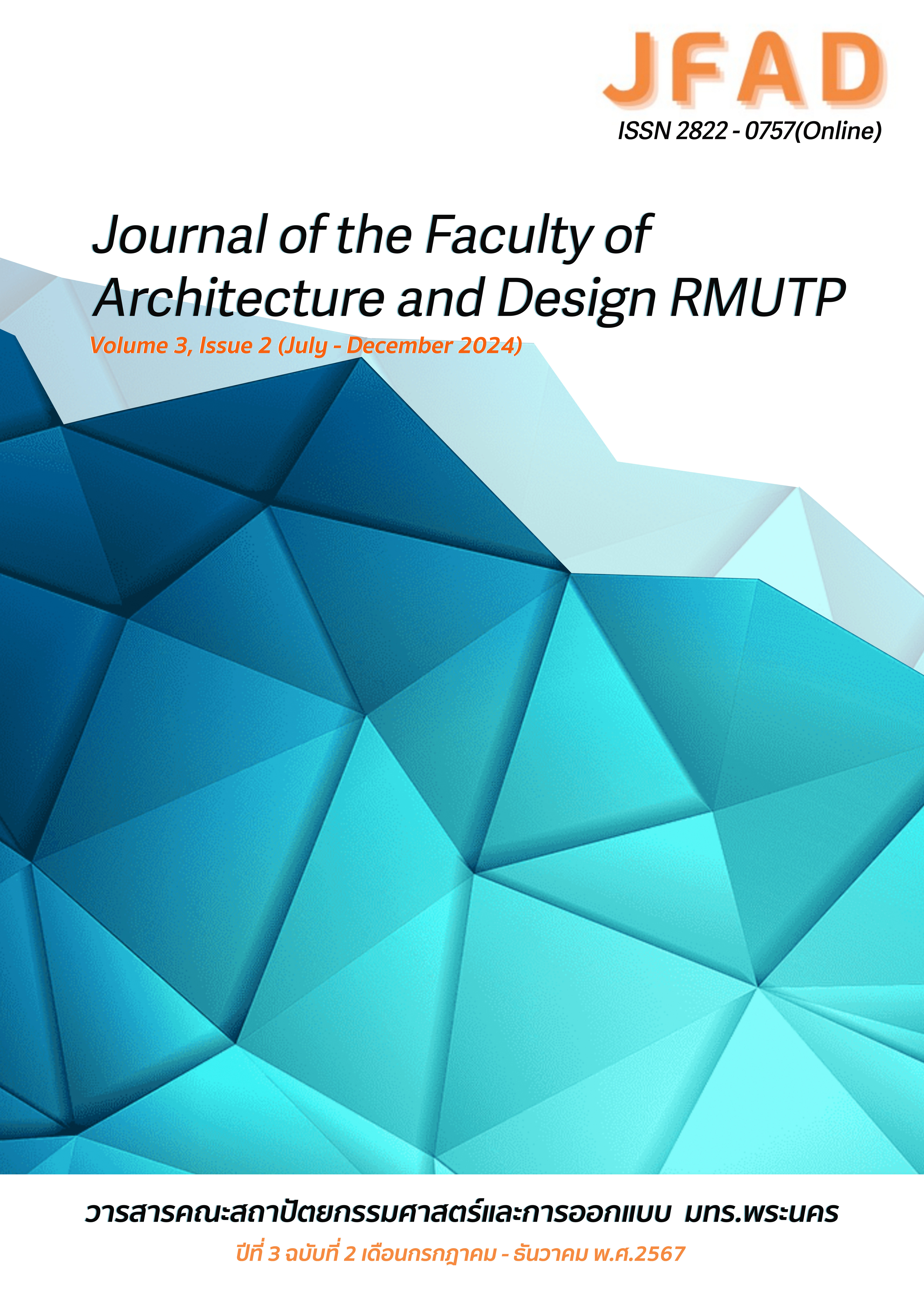Impacts of Migration into Conservation and Cultural Heritage Communities in Thailand
Main Article Content
Abstract
Efforts to preserve cultural heritage should aim to preserve not only physical objects such as buildings and landscapes. But it also includes intangible things such as culture, traditions, and way of life. However, in Thailand, it is often found that the preservation of historical communities is contrary to the above statement. That is to say, the buildings and architectural features are well preserved. Without preserving their way of life and economic and social structure Especially at present Community conservation in Thailand focuses mainly on preserving heritage buildings and surrounding areas. This type of conservation is more expensive than communities alone can afford. One way to raise funds for conservation is to adapt a community's historical and cultural heritage into a tourist attraction. This study therefore aims to study the phenomenon in Thailand where people in other areas migrate from their original residences come to the protected area to earn money from tourism. This study is on 3 areas, Amphawa Floating Market, Sam Chuck 100 Years Old Market and Chiang Khan Old Market. The results of the study concluded that this phenomenon occurred when a community was declared a cultural heritage site. The community has more opportunities to generate income. People's lifestyles and economic and social structures have changed greatly. This is because such adjustments can successfully generate income for the community. Therefore, it attracts outsiders to come and take advantage of the improved economic situation. Instead, it pushes traditional villagers away. Investors may offer to buy a villager's land and property, and the villager may be happy with that offer. Therefore, when the original villagers moved out more the uniqueness and charm of the local way of life and culture began to disappear and was almost completely lost.
Article Details

This work is licensed under a Creative Commons Attribution-NonCommercial-NoDerivatives 4.0 International License.
Copyright (c) 2023 : Faculty of Architecture and Design, Rajamangala University of Technology Phra Nakhon
References
การท่องเที่ยวแห่งประเทศไทย. (2539). การพัฒนาการท่องเที่ยวในทิศทางที่ยั่งยืน (พิมพ์ครั้งที่ 2). กรุงเทพฯ.
บุญเลิศ จิตตั้งวัฒนา. (2548). การพัฒนาการท่องเที่ยวแบบยั่งยืน. กรุงเทพฯ: เพรสแอนด์ ดีไซน์.
บุญเลิศ จิตตั้งวัฒนา. (2542). การวางแผนพัฒนาการท่องเที่ยวแบบยั่งยืน (พิมพ์ครั้งที่ 1). คณะมนุษยศาสตร์ มหาวิทยาลัยเชียงใหม่.
ปริญญา ชูแก้ว. (2557). การอนุรักษ์ชุมชนที่อยู่อาศัยดั้งเดิมของไทย: ประสบการณ์จากการทำงานภาคสนาม. กรุงเทพมหานคร: บริษัท พลัสเพรส จำกัด
Chanpeng, M. and Chairatananonda, P. (2015). Reducing adverse impact guideline for tourism development in cultural tourism place, traditional community: A case study of waterfront community, Chiang khan District, Loei Province. Veridian E-Journal 8(2). Slipakorn University.
Creswell, J. W. (2013). Qualitative inquiry and research design: Choosing among five approaches. Sage.
Eawsriwong, N. (1989). Cultural community and tourism. Chiangmai Institute of social sciences research. Chiangmai University.
Erlandson, D. A. (1993). Doing naturalistic inquiry: A guide to methods. Sage.
Feilden, B. M., & Jokilehto, J. (1998). Evaluation for conservation. Chap Management guidelines for world heritage sites. 11e21.
Feilden, Sir B., & Jokilehto, J. (1998). Management guidelines for the world cultural heritage sites. Rome ICCROM.
Guzmán, P. C., Roders, A. P., & Colenbrander, B. J. F. (2017). Measuring links between cultural heritage management and sustainable urban development: An overview of global monitoring tools. Cities, 60, 192-201.
Harachai P and Monsicha Bejrananda M. (2009). The tourism capacity assessment of Sisaket for the formation of provincial sustainable tourism development policy. The 8th Asia Pacific Forum for Graduate Students Research in Tourism Conference.
Meak-on, S. and Bejarananda, M. (2013). Tourism Impact on Community Indentity: Case of Amphawa Community. Architecture journal 12, KhonKhan University.
Pewnim, M. (2003). Project development and the impact of tourism a case study floating market.
Pimolsathein, Y. (2012). CRITICAL ISSUES ON THE CONSERVATION OF HISTORIC URBAN COMMUNITY FOR THAILAND.
Pimolsathien, Y. (2013). Conservation of urban and revival of urban. Thammasat university.
Pongsakornrungsilp. P. (2014). The Management of Sustainable Community-Based Tourism: The Case of Ban Kokekrai, Phang Nga Province. International Humanities, Social Sciences and arts, 7(3), 650-665.
Sanglimsuwan, K . and Sanglimsuwan, S. (2012). Sustainable cultural heritage tourism. Executive Journal 32(4), 139-146.
Seyanont, A. (2009). The Prevention of Deterioration and Natural Resources and Environmental Conservation of Amphawa Floating Market. Thai Chamber of Commerce journal 29 (4).
Sudchaya, S. (2009). Urban conservation. Amarin printing and publishing, Bangkok.
Swarbrooke, J. (1999). Sustainable Tourism Management. London: CABI.
Tharawan, A. and Pewnim, M. (2014). Social – Cultural Impacts Of Tourism Management In Chiang Khan, Loei Province. Thailand Graduate research conference.


